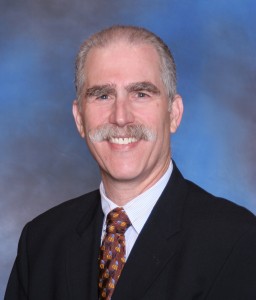Pathologists and clinical laboratories could help reduce error rate through greater collaboration with providers
Expect the topic of diagnostic mistakes to get more media attention in coming years. That is consistent with the efforts of healthcare policymakers to improve patient safety while making it easier for consumers to access information about the quality and cost when selecting hospitals, physicians, and medical laboratories.
One opening salvo in this campaign is a new report from the Institute of Medicine (IOM) titled “Improving Diagnosis in Health Care.” It concludes that Americans will receive at least one wrong or late diagnosis in their lifetime. The rate of diagnostic errors is a patient-safety issue in which pathologists and clinical laboratories could play an important role in reducing.
Pathologists often know which physicians in their community routinely order inappropriate or wrong tests for patients. That is why pathologists could be instrumental in reducing diagnostic errors through better communication with providers to ensure doctors not only order the correct clinical laboratory tests, but also select the appropriate therapies based on test results.
Diagnostic Errors a Blind Spot in Healthcare Delivery
The IOM report was released by the National Academies of Sciences, Engineering and Medicine nationalacademies.org/ (NASEM) in September 2015. It labels diagnostic errors as the “blind spot in the delivery of quality healthcare.”
Diagnostic errors cause about 10% of all patient deaths and about 17% of “adverse events,” the IOM reports states. Unless changes are made, the report committee concluded that errors likely will become more prevalent as the delivery of healthcare and the diagnostic process increases in complexity.
“A timely, accurate and efficient diagnosis is appropriately the expectation of every patient, yet every one of us is likely to experience one or more diagnostic errors in our lifetime,” Mark Graber, MD, Founder and President of the Society to Improve Diagnosis in Medicine (SIDM) and a member of the report committee, said in an SIDM statement. “Diagnosis is one of the most difficult and complex tasks in healthcare. There are more than 10,000 potential diagnoses, thousands of lab tests, and the problem that symptoms of each diagnosis vary from person to person. Moreover, our healthcare systems are highly complex, which contributes to problems coordinating care and completing the diagnostic process successfully.”

Mark Graber, MD, FACP, is Senior Fellow, Health Care Quality and Outcomes Program, RTI International, and founder of the Society to Improve Diagnosis in Medicine (SIDM). Graber strives to improve the practice of diagnosis and our understanding of diagnostic errors, which, he says, will require partnership and collaboration between healthcare professionals, organizations, and patients. (Photo and caption copyright: Society to Improve Diagnosis in Medicine.)
SIDM petitioned the NASEM to produce the newest report. It was undertaken by a 21-person committee with an 11-person support staff and is a continuation of the IOM’s Quality Chasm Series, which dates back to 2000.
“These landmark IOM reports reverberated throughout the healthcare community and were the impetus for system-wide improvements in patient safety and quality care,” Victor J. Dzau, MD, President of the IOM, said in an NASEM statement. “But this latest report is a serious wake-up call that we still have a long way to go. Diagnostic errors are a significant contributor to patient harm that has received far too little attention until now. I am confident that ‘Improving Diagnosis in Health Care,’ like the earlier reports in the IOM series, will have a profound effect not only on the way our healthcare system operates but also on the lives of patients.”

Victor J. Dzau, MD, President of the Institute of Medicine (IOM), calls the organization’s recent report that estimates the majority of Americans will get a wrong or late diagnosis in their lifetimes a “serious wake-up call.” (Photo copyright: Duke University.)
Communication Breakdowns Major Factor in Diagnostic Errors
The committee defined diagnostic error as “the failure to establish an accurate and timely explanation of the patient’s health problems or communicate that explanation to the patient.” They blamed diagnostic errors on a variety of causes, including:
• “Inadequate collaboration and communication among clinicians, patients, and their families;
• “A healthcare work system that is not well designed to support the diagnostic process;
• “Limited feedback to clinicians about diagnostic performance; and,
• “A culture that discourages transparency and disclosure of diagnostic errors, which in turn may impede attempts to learn from these events and improve diagnosis.”
“Some people go to their graves with a diagnostic error that is never detected,” Robert Berenson, MD, a research fellow at the Urban Institute in Washington, D.C., and one of the committee members who wrote the report, told Kaiser Health News. “It’s much more difficult to measure than a medication error.”
Goals for Improving Diagnosis
The authors outlined eight goals to improving diagnosis:
• Facilitate more effective teamwork in the diagnostic process among healthcare professionals, patients and their families;
• Enhance healthcare professional education and training in the diagnostic process;
• Ensure that health information technologies support patients and healthcare professionals in the diagnostic process;
• Develop and deploy approaches to identify, learn from, and reduce diagnostic errors and near misses in clinical practice;
• Establish a work system and culture that supports the diagnostic process and improvements in diagnostic performance;
• Develop a reporting environment and medical liability system that facilitates improved diagnosis through learning from diagnostic errors and near misses;
• Design a payment and care delivery environment that supports the diagnostic process; and,
• Provide dedicated funding for research on the diagnostic process and diagnostic errors.
Paul Epner, MBA, Executive Vice President of SIDM, echoed the report’s call to action.
“The concept of diagnosis as a team endeavor is a very powerful one, allowing the patient to be an active party, along with nursing staff and the diagnostic professionals in the clinical laboratory and radiology areas,” Epner stated in the SIDM news release. “Education reform is another key element, so that trainees learn mechanisms to reduce diagnostic errors in practice.”

“For a problem that may be as lethal as traffic accidents, diabetes, or AIDS, research funding on the causes and potential solutions is urgently needed,” said Paul Epner, Executive Vice President, Society to Improve Diagnosis in Medicine, in the SIDM news release. (Photo copyright: Clinical Laboratory Management Association.)
ASCP Educates Patients on How to Communicate with Their Physicians
In addition to SIDM’s efforts to improve diagnosis, the “Choosing Wisely” campaign, an initiative of the American Board of Internal Medicine Foundation (ABIM), is working to ensure physicians order evidence-based tests and procedures for their patients. As part of that campaign, the American Society for Clinical Pathology (ASCP) is attempting to educate patients about the conversations they should have with their providers when medical tests, treatments, or procedures are recommended.
“Measuring outcomes is essential in the fast-approaching evolution of healthcare and is underscored by the axiom, ‘right test, right patient, right time, at the right cost.’” ASCP Executive Vice President E. Blair Holladay, PhD, said in an ASCP news release. “Examples of inappropriate and over-utilized tests are pervasive throughout both anatomic and clinical pathology and laboratory medicine.”
With diagnostic errors reported to be the leading cause of medical malpractice claims in the United States and the cause of an estimated 40,000 to 80,000 deaths annually, pathologists could play a larger role in ensuring patients get the right medical laboratory tests as well as follow-on treatments that offer the best chance for positive outcomes.
—Andrea Downing Peck
Related Information:
Improving Diagnosis in Health Care
Most Americans Will Get a Wrong or Late Diagnosis at Least Once in Their Lives
SIDM Responds to New Diagnostic Error Report, Proposes Action Steps
IOM: Teamwork Key to Reducing Medical Diagnostic Errors
How Health IT Integration Can Help Reduce Diagnostic Errors
New York Times Writes about Pathologists’ Misdiagnoses of Breast Cancer Cases



